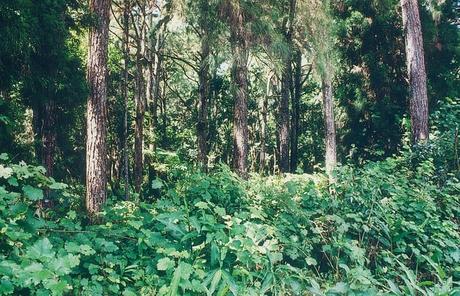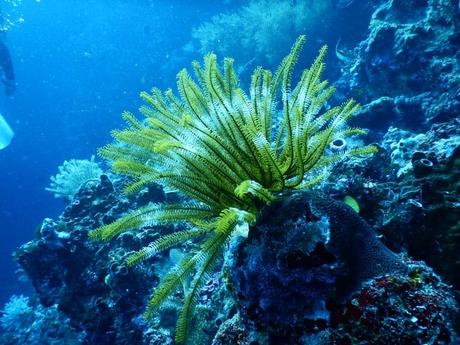Various Types of Natural Ecosystem
Natural ecosystem is a community of living and non-living organisms, where each component interacts together as a unit through biological, physical and chemical processes. The distinctiveness of natural ecosystems is that they are purely natural and their formations are not in any way influenced by human activity.
The reason for pointing this out is because ecosystem is an intricate term and as such, it also encompasses artificial ecosystems – influenced by human activity, which necessitates the need to differentiate the two. The components enabling the interactions that make up the natural ecosystems include soil, plants, sunlight, air, water, microorganisms and animals. The sizes and characteristics of ecosystems also vary and are thus categorized according to the notable variations.

Here is a list of the various types of natural ecosystems.
1. Tropical Rainforest Ecosystems
The tropical rainforests are found near the equator, between the tropics. These are the regions that experience very high annual rainfall and are characterized with high average temperatures. The areas also have high humidity that is lower in the dry season compared to the wet seasons.
The tropical rainforest areas have extreme biodiversity and boost some of the most unique plant and animal species in the planet. Due to their location near the equator, they offer favorable conditions for survival. However, the soils in tropical rainforest ecosystems are poor in nutrients as they are not stored for very long in the soil.
2. Taiga Ecosystem
Taiga ecosystems are also referred to as the boreal forests or snow forests. These ecosystems constitute the world’s largest land ecosystems making up 29% of the world’s forest cover. They are found throughout the high northern latitudes with considerable regional variations. Particularly, they are Subarctic-subalpine, needle-leaved forests. The Taiga ecosystems experiences extreme winters and short summers. Taiga soils are thin and poor in nutrients due to the cold which hinders the development of the soils.
3. Temperate Forest Ecosystem
The temperate forest ecosystems primarily include the temperate coniferous forests, which are evergreen and the temperate deciduous forests – the trees that lose their leaves each year. These natural ecosystems are mainly found between the tropics and in the Polar Regions. Their trees are wide leafed, large and tall. The major trees in these forests are the maple, oak, redwood, ash, birch, pine and beech. The areas have less undergrowth. The temperate rainforest experience moderate rainfall and dense humidity with mild winters.
4. Tundra Ecosystem
Tundra ecosystems are found in the Arctic and Antarctic – the Polar Regions. The vegetation in Tundra ecosystems is composed of dwarf shrubs, sedges and grass, mosses and lichens. The subsoil is permanently frozen, which makes it impossible for trees to grow in the region. The tundra is covered in marches, lakes and streams during the warm summers.
Since the Tundra ecosystems are very cold, the biodiversity is low with few plant species and land mammals adapted to the prevailing environmental conditions. Polar bears are example of the land mammals adapted to the Tundra regions. There are also numerous bird species migrating through these regions each year.
5. Shrubland Ecosystem
Shrubland ecosystems are as well known as scrubland since they are dominated by low shrubs. The ecosystem occurs as a result of a transitional plant community between regions or may also occur after a disturbance of a forest because of natural or wildfires. Other interacting factors leading to the formation of shrublands include nutrient-poor soils, aridity or drought.
Since these conditions are highly common in temperate, semi-arid, and continental climate areas, shrublands existence are predominant in these areas. Heath is a good example of shrubland found on free-draining infertile acidic soils in humid and sub-humid areas. The moorland, another example, is mostly found on the mountain regions and its species is suitable for its unique microclimate.
6. Lentic Ecosystems
These are the still water ecosystems. Lakes and the seas are good examples, but they can range from ponds to lagoons to vast oceans. These ecosystems have three regions. They include the open water zone, deep bottom regions not exposed to light, and the bottom and shore regions each with different conditions. Therefore, they host species specifically adapted to live in the regions, forming layers of different ecosystems.
7. Desert Ecosystem
Desert ecosystems are typically cold in the night and very hot during the day. They receive little to no rainfall annually. Deserts cover up to one fifth of the earth’s surface and lie in temperate zones as well. Owing to their extreme weather conditions, only a few animals live in the deserts.
A good example is the camel which is capable of storing sufficient water and withstands the heat. Many other desert animals are nocturnal, spending most of their time underground during the day. Examples include desert snakes, scorpions, desert tortoise and many other reptiles. Deserts have sparse vegetation, also adapted to the desert conditions. An example is the Cacti. Above all, desserts are further categorized into four; cold, hot and dry, semiarid, and coastal deserts.

8. Grassland Ecosystem
Grassland ecosystems include the temperate grasslands and the tropical savannahs. The soil of the temperate grassland is deep and dark with fertile upper layers, which is good for supporting plant growth. Savannahs, on the other hand, are found in warm and hot climates where the annual rainfall is very low. The soil of the savannah is porous with rapid drainage of water. The dominant vegetation is grass with scattered trees and shrubs. The ecosystem supports a large number of animal species such as the zebra, gazelle, wolves, rabbits, foxes, and coyotes.
9. Littoral Ecosystems
These ecosystems are common at the shores of lakes, rivers and seas. They are sometimes referred to as the intertidal zone where the effects of tides are minimal. The availability of water in these ecosystems enables a greater variety of plant and animal life, and the formation of extensive wetlands. Also, the high humidity as a result of evaporation supports unique types of organisms. The aquatic plants are grouped based on their tolerance to water depth; and their examples include the aquatic plants, marsh, wet meadow, and the wooded wetland.
10. Lotic Ecosystem
Any kind of moving water makes up lotic ecosystems. They range from springs to major rivers. The flow of a river is unidirectional and there is a state of continuous physical change. There is a high degree of spatial and temporal microhabitats at all scales and the variability between lotic systems is quite high.
For this reason, several plant and animal species are able to interact with the lotic systems. The plants and animals in the regions are specialized to live in the flowing conditions. Lotic ecosystems have two main zones, rapids where the water is fast and pools, where waters are deep and the currents are slower.
11. Salt Marsh
The areas regularly flooded by the tides between open saltwater and land in the upper coastal intertidal zone make up saltmarsh ecosystems. Thus, it is part of the coastal ecosystem. Its uniqueness arises because it is densely dominated by salt tolerant plants namely grasses, herbs and low shrubs. These ecosystems support a number of terrestrial animals and provide protection to the coastal areas. They also play a critical role in the aquatic food web by availing nutrients in the coastal waters.
12. Coral Reefs
The diverse underwater marine ecosystems in existence across the world’s oceans in both deep and shallow waters constitute the coral reef ecosystems. They cover about one percent of the total ocean floor. Coral reefs are the “big cities of the sea” also often referred to as the “rainforests of the sea”.
Since they have diverse and intricate marine habitats supporting a widely different numbers of marine species, coral reefs qualify as the world’s most prolific ecosystems. Notably, they act as the breeding grounds for fish and keep them safe while at the same time nourishing them with nutrients until the young ones are able to strike out in the ocean. Coral reefs also protect the ocean shores from storm damage.
13. Mangrove Swamp
Any form of shrubs or small trees growing in the coastal saline or brackish water make up the mangrove swamp ecosystems. The plants and shrubs in mangrove ecosystem are highly salt tolerant and well adapted to the harsh coastal conditions such as the low oxygen conditions of waterlogged mud. The plants also have complex root systems enabling them to cope with salt water immersion and wave action. The mangrove swamps are largely found in tropical and subtropical tidal areas.

